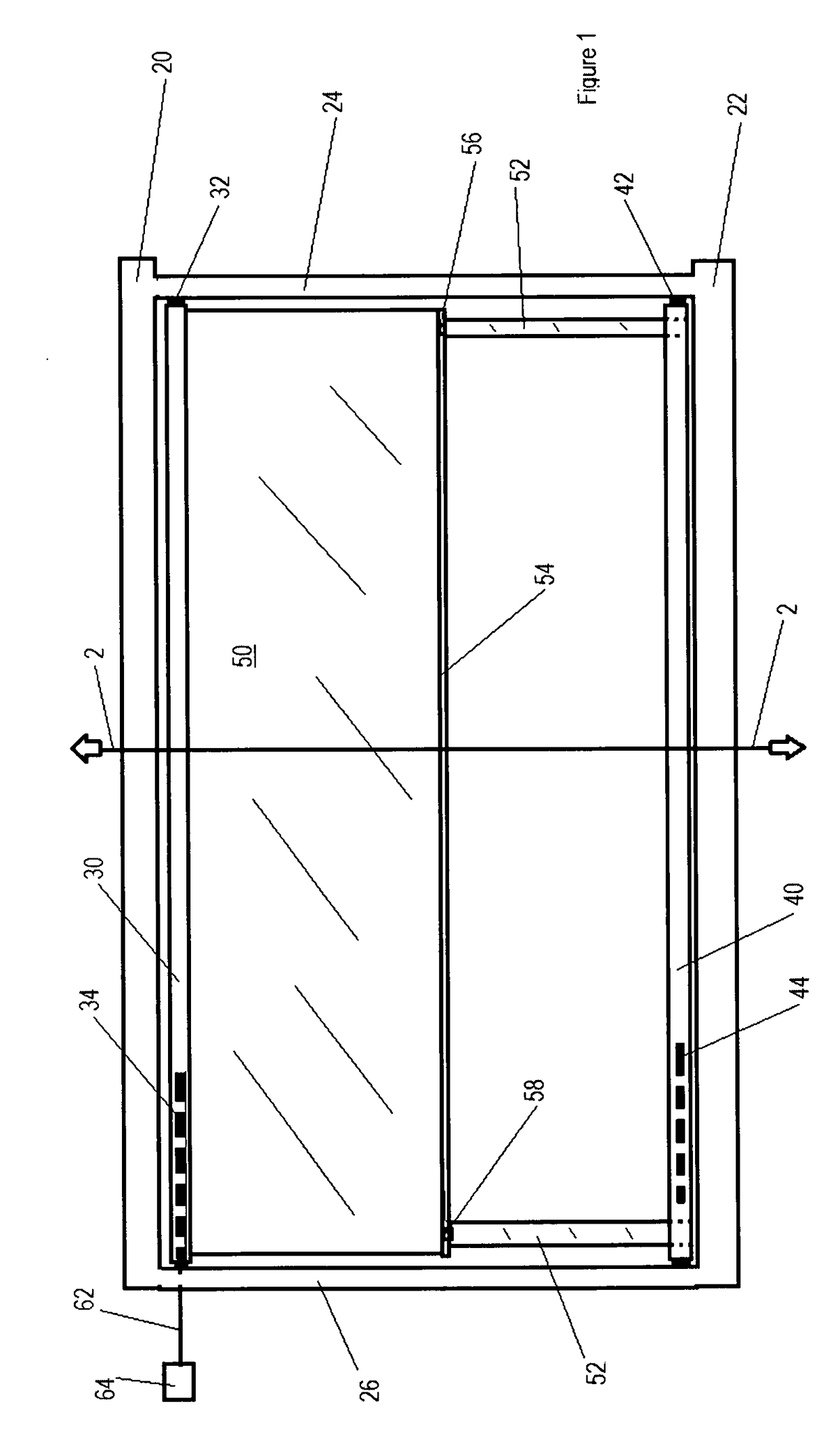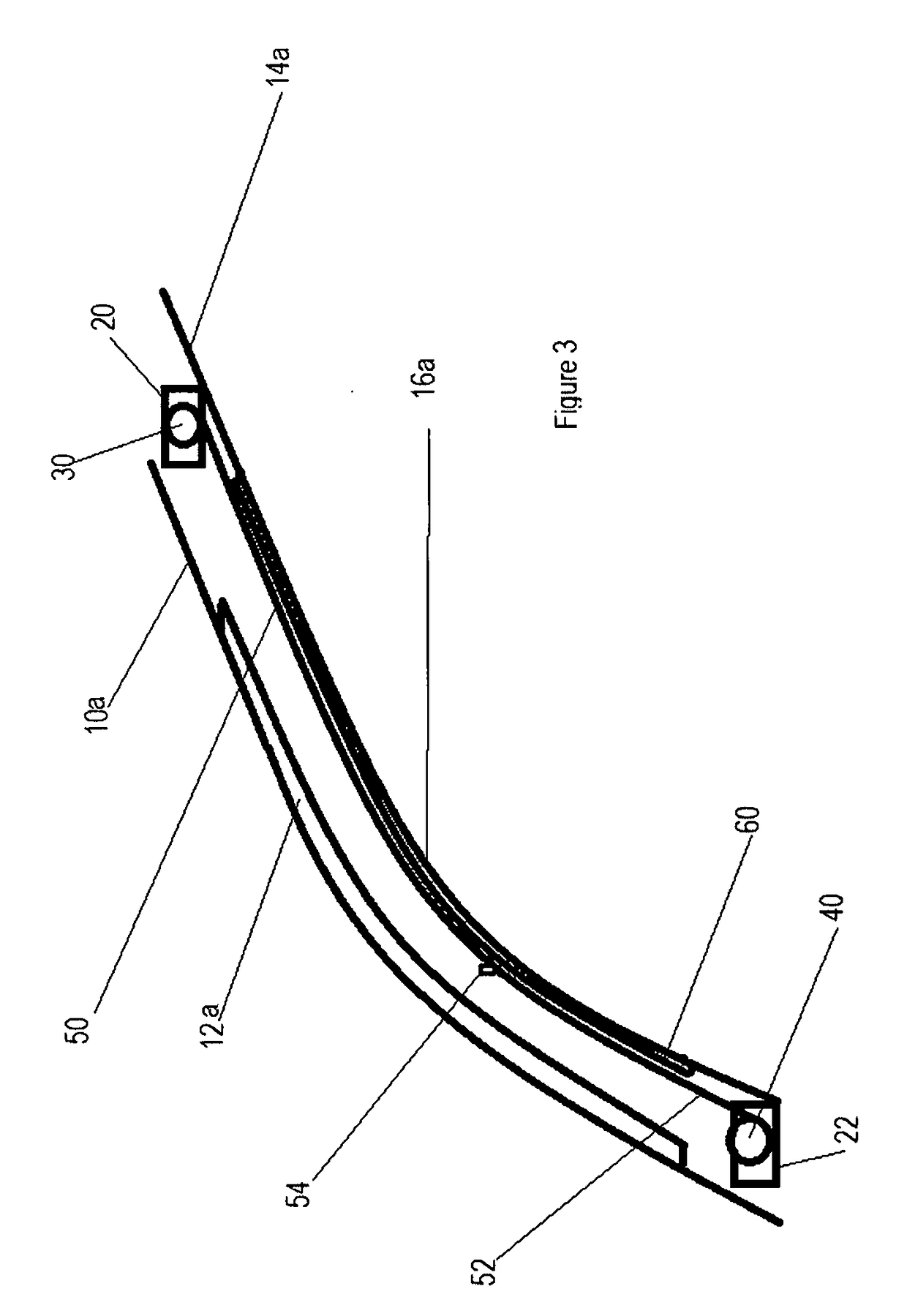Motorized window shades for RVs
a motorized and rv technology, applied in the direction of sunshades, door/window protective devices, transportation and packaging, etc., can solve the problems of manual operable shades not having the same top-to-bottom alignment problems, motorized shades are more expensive than manual operable shades, etc., to increase the aesthetic appeal of rvs
- Summary
- Abstract
- Description
- Claims
- Application Information
AI Technical Summary
Benefits of technology
Problems solved by technology
Method used
Image
Examples
Embodiment Construction
[0020]FIGS. 1-3 show schematically, multiple embodiments of the present invention, as applicable to vehicles, such as Class B motorhome RVs. The following features are[0021]illustrated in those drawings:
[0022]a vehicle 10, having a wall into which an inclined window 12 or curved window 12a is mounted (such as a cab-over window in a Class B motorhome), the vehicle typically resting on a generally horizontal plane of reference, such as a road or the ground,[0023]a window shroud 14 or 14a, typically mounted inside of vehicle 10 and in close proximity to window 12 or 12a, respectively, the distance therebetween forming a wall thickness for vehicle 10,[0024]an opening 16 or 16a in the window shroud, that opening generally corresponding in location and dimension to the location and dimension of corresponding window 12 or 12a, respectively,[0025]an elevational or aesthetic feature 18 of shroud 14, altering the topography of that shroud in certain instances, and thereby changing the wall th...
PUM
 Login to View More
Login to View More Abstract
Description
Claims
Application Information
 Login to View More
Login to View More - R&D
- Intellectual Property
- Life Sciences
- Materials
- Tech Scout
- Unparalleled Data Quality
- Higher Quality Content
- 60% Fewer Hallucinations
Browse by: Latest US Patents, China's latest patents, Technical Efficacy Thesaurus, Application Domain, Technology Topic, Popular Technical Reports.
© 2025 PatSnap. All rights reserved.Legal|Privacy policy|Modern Slavery Act Transparency Statement|Sitemap|About US| Contact US: help@patsnap.com



